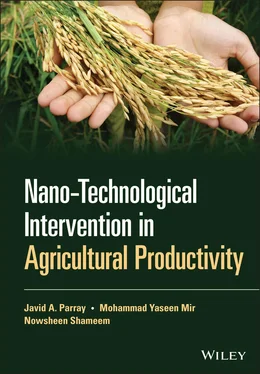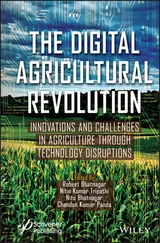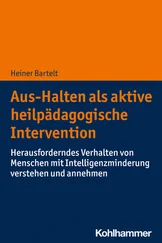1 Nanotechnological innovations in plant biology
2 Nanotechnology and transgenic via genome editing towards sustainable agricultural systems
3 Nanofertilizers and nanopesticides
4 Nanoparticle protection in plants.
1 Nanotechnology and Nanoparticles
CHAPTER MENU
1 Nanoparticles and Their Functions
2 Classification of NPs Carbon‐Based NPs Metal Nanoparticles Ceramic NPs Semiconductor NPs Polymeric NPs NPs Based on Lipids
3 Synthesis of Nanoparticles Top‐Down Synthesis Bottom‐Up Synthesis
4 NPs and Characterization Morphological Characterization Structural Characteristics Particle Size and Surface Area Characterization Optical Characterizations
5 Physicochemical Properties of NPs Mechanical and Optical Properties Magnetic Properties Mechanical Properties Thermal Properties
6 Functions of NPs Drugs and Medications Materials and Manufacturing Environment Electronics Energy Harvesting
7 References
1.1 Nanoparticles and Their Functions
Since the past century, nanotechnology has been an advanced research area. RP Feynman coined the term ‘nanotechnology’ during his famous speech [1]. Nanotechnology developed different types of nanoscale materials. A limited class of one‐dimensional materials <100 nm [2] are nanoparticles (NPs). Depending on the form [3], such materials may be 0D, 1D, 2D, or 3D. The importance of these materials showed that the physicochemical properties of a substance, e.g. the optical properties, can be influenced by size. The red wine, yellowish‐grey, black, and deep green are the distinctive colours of the 20 nm gold (Au), platinum (Pt), silver (Ag), and palladium (Pd) NPs. These NPs exhibit distinctive colours and properties of various sizes and shapes that can be used in bioimaging applications. [4]. Owing to differences in aspect ratio, nanoshell thickness, and Au concentration, the solution's colour varies. Changing each of the elements mentioned above affects the absorption characteristics of the NPs and is therefore observed in different absorption colours. Usually, NPs consist of three layers: (i) a layer‐functionalized surface with several tiny molecules, metal ions, surfactants, and polymers; (ii) a shell layer – a chemically separate core substance; and (iii) a centre – an integral part of the NP and typically refers to the NP itself [5]. Researchers gained immense interest in multidisciplinary fields because of these exceptional features. NPs may be used for the delivery of drugs [6], chemical and biological sensing [7], gas sensing [8], CO 2capture [9], and related uses [10].
1.2 Classification of NPs
NPs are commonly classified according to morphology, size, and chemical properties in different classes. NPs are classified according to physical and chemical characteristics as follows.
Two key NP groups based on carbon are fullerenes and carbon nanotubes (CNTs). Fullerenes contain globular hollow cage nanomaterials, similar to allotropic carbon forms. Their electrical conductivity, high power, structure, electron affinity, and flexibility have created considerable commercial interest [11]. Pentagonal and hexagonal C‐ units were arranged in these materials while each carbon was hybridized. The illustration in Figure 1.1shows some of the well‐known 7.114 and 7.648 nm C 60and C 70fullerenes. The long, tubular CNTs have a diameter of 1–2 nm [12]. This can be predicted as metallic or semiconducting based on their telicity diameter [13]. Single, double, or multiple walls may be rolling sheets labelled single‐walled nanotubes (SWNTs), double‐walled nanotubes (DWNTs), or multi‐walled carbon nanotubes (MWNTs), respectively. They are commonly synthesized by carbon precursor deposition, particularly atomic carbons, which are vaporized by a laser or electric arc through metal particles. Recently, they have been synthesized using the chemical vapour deposition (CVD) technique [14]. Because of their specific physical, chemical, and mechanical characteristics, these materials are widely used in industrial applications, not only in pristine form but also in nanocomposites such as fillers [15], active gas adsorbents for the remediation of the environment [16], and, in general, for various inorganic and organic catalysts [17].
1.2.2 Metal Nanoparticles
Metal NPs comprise metal‐made precursors. Because of the well‐localized surface plasma resonance (LSPR) characteristics, such NPs have distinct optoelectronic properties. In the visible region of the solar electromagnetic spectrum, the NPs of alkali and noble metals such as Cu, Ag, and Au have broadband absorption. In today's cutting‐edge materials, the facet, size, and shape‐controlled synthesis of metal NPs are critical [4]. Metal NPs are finding applications in many research fields because of their advanced optical properties. The coating of gold NPs is widely used to enhance electronic streaming for scanning electron microscopy (SEM) sampling, thus helping to accomplish good SEM images.

Figure 1.1 Description of fullerenes or buck balls (a) C 60and (b) C 70.
Source: From Khan et al. [2]. © 2017, Elsevier.
NPs from ceramics are inorganic non‐metallic solids synthesized by heat and cooling. They are used in amorphous, polycrystalline, solid, porous, or hollow [18] forms. Because of their use in catalysis, photocatalysis, colour photodegradation, and imaging, these NPs offer substantial interest from researchers [19].
Semiconductor materials have properties between metals and non‐metals, and because of this property, they find different applications in the literature [20]. Semiconductor NPs have large band gaps, demonstrating significant modifications to their properties with band gap tuning. Items of great significance also include photocatalysis, photo‐optics, and electronic devices [21]. Because of their appropriate band gap and band edge positions, the range of semiconductor NPs is considered exceptionally efficient in water splitting applications [22].
These substances are used for a wide range of commercial applications, such as fillers [15], effective adsorbents of environmental remedial gases [16], and as a support medium for various inorganic and organic calculators because they give specific physical, chemical, and mechanical characteristics [23].
1.2.6 NPs Based on Lipids
In many biomedical applications, they are used, and they contain lipid molecules. Usually, the lipid NP is spherical, 10–1000 nm in diameter. Similar to polymeric NPs, lipid NPs have a solid lipid core and lipophilic molecules within the matrix. The external centre of these NPs has been stabilized by surfactants or emulsifiers [24]. Lipid nanotechnology [25] is a specific field that focuses on the design and synthesis of lipid NPs for various applications, such as drug carriers and delivery [26] and the release of RNA cancer therapy [27].
1.3 Synthesis of Nanoparticles
Various techniques can be used for the synthesis of NPs. Nevertheless, these approaches are generally divided into two main categories, i.e. (i) top‐down approach and (ii) bottom‐up approach [28, 29] ( Figure 1.2). These methods are further divided into different subclasses based on process, reaction state, and adopted protocols.
Читать дальше












![Chade-Meng Tan - Search Inside Yourself - Increase Productivity, Creativity and Happiness [ePub edition]](/books/703803/chade-thumb.webp)
